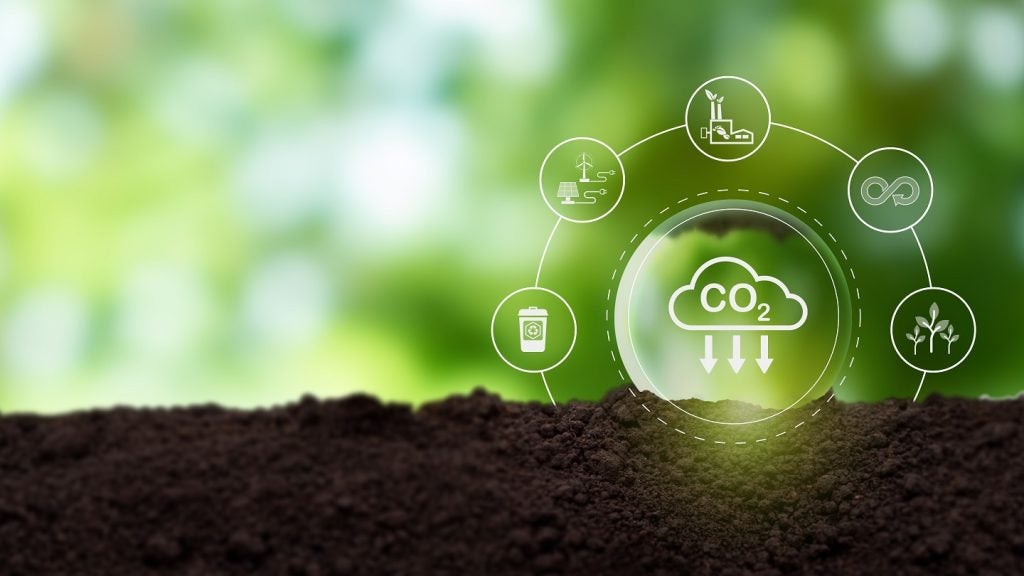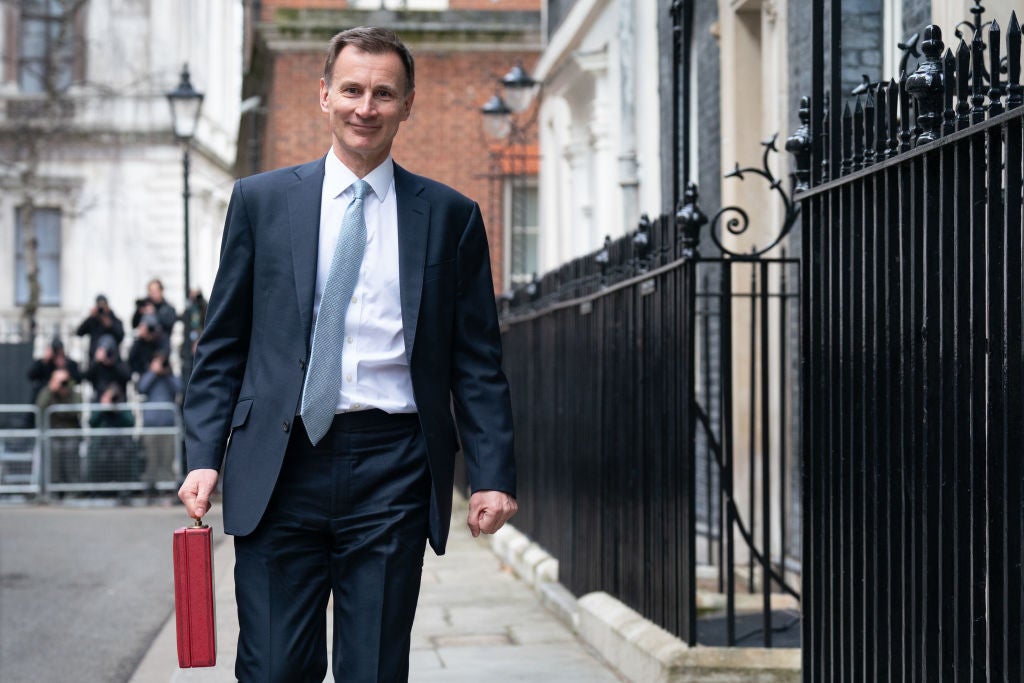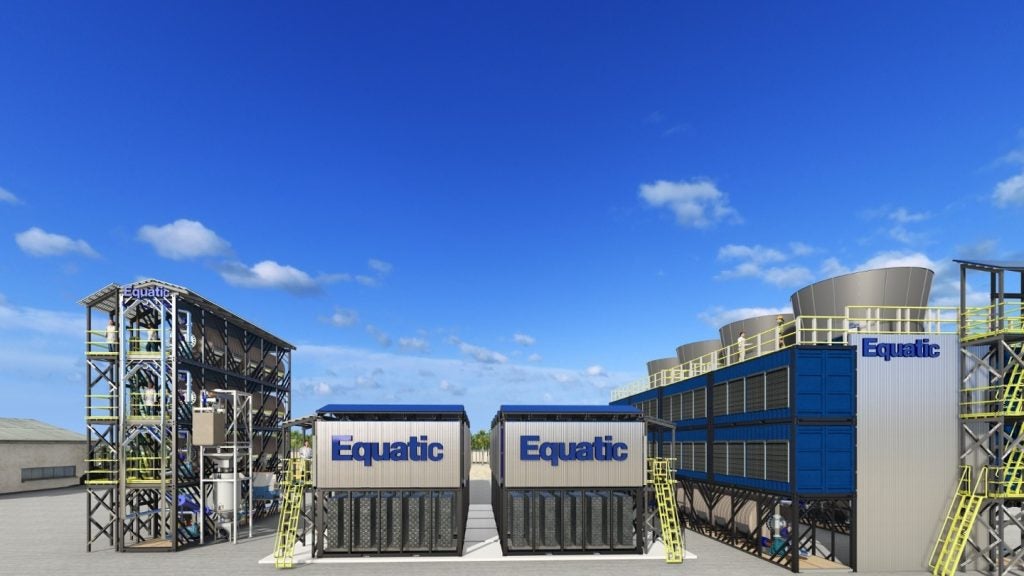
Various CO2 capture technologies exist and, particularly in the US, the gas is being injected underground to enhance recovery from declining fields. The Intergovernmental Panel of Climate Change estimates that underground storage runs to 2,000 gigatonnes.
However, there are still concerns over what will happen to injected CO2. In addition, the energy and cost needed to process CO2 are still being established.
Jan van de Eijk, Shell’s chief technology officer, explains that his company is looking at the bigger environmental picture. According to Shell, there are two scenarios for the development of greenhouse gas reduction technologies such as carbon capture and sequestration (CCS): the scramble and the blueprint.
The scramble, according to van de Eijk, is where individual companies or groups continue to pursue individual agendas.
“And only after a number of years do they realise that it doesn’t work and are therefore shocked into moving toward closer cooperation,” he says. “The blueprint, however, is where governments and stakeholders start to work collectively worldwide to address climate change issues.”
See Also:
Joint effort
How well do you really know your competitors?
Access the most comprehensive Company Profiles on the market, powered by GlobalData. Save hours of research. Gain competitive edge.

Thank you!
Your download email will arrive shortly
Not ready to buy yet? Download a free sample
We are confident about the unique quality of our Company Profiles. However, we want you to make the most beneficial decision for your business, so we offer a free sample that you can download by submitting the below form
By GlobalDataThough he in no way discounts other concerns – areas such as water quality and biodiversity protection – for van de Eijk, the key issue that everyone should be resolving together is CCS and, in doing so, putting cooperation before profit.
“There will always be differences in the details but, fundamentally, this is our stance on CCS,” he says.
“We believe this is an area where working with other entities is the way forward: through the sharing of information and data so you have joint accelerated learning. That is what we should all do now rather than try to carve out a proprietary, unique capability for ourselves. It is happening this way. There are many joint industry projects in this space.”
Shell is part of a broad-based coalition, the European Technology Platform for Zero Emission Fossil Fuel Power Plants (ZEP), which aims to speed up the roll-out of demonstration projects so that CCS will be in commercial use by 2020. In its 2007 sustainability report Responsible Energy, Shell asserts: “ZEP brings together the European Commission, European industry, NGOs, scientists and environmentalists. Thanks partly to ZEP’s efforts, the European Union has recently launched a flagship programme to build 10 to 12 demonstration power plants with CCS by 2015. There is no time to lose. Every year’s delay in the large-scale roll-out of CCS adds more than one part per million to long-term global levels of CO2 in the atmosphere.”
Van de Eijk agrees that there has been enough talk.
“I think these are all areas where we will not gain anything by further intellectual discussions,” he says. “It is about getting some real action going and starting to learn from the feedback from these demonstration projects. This is something where Shell, and other companies, are putting in significant effort.”
Brent Spar: the green lesson
Brent Spar was a redundant North Sea crude storage and tanker-loading buoy. In 1995, Shell obtained the UK Government’s permission to sink it 155 miles off the Scottish coast in water 1.5 miles deep. The resultant uproar by environmental groups led by Greenpeace prompted driver boycotts of Shell’s filling stations and inflicted substantial reputational damage to a company that, with such
products as its nature guides, had always cultivated an environmentally responsible image.
Shell tried to answer its critics but in the end, after Greenpeace activists had actually boarded the structure as it was being towed for disposal, it abandoned the plan.
“I can only speak for what it did to me as a Shell employee at the time,” says Jan van de Eijk. “I learnt that when you are having discussions with external stakeholders, there is more to having a good dialogue than possessing a sound engineering type of analysis of a mission and alternatives. There are many more things that need to be addressed in such discussions than the scientific and engineering areas. We learnt that the hard way with Brent Spar. It has helped us very much to understand that we are talking about the planet and that engagement with our external stakeholders needs to start early and needs to be more than just an exchange of scientific and engineering considerations.”
Acid rain: the green model
While counselling against complacency, Jan van de Eijk points to the successful way in which other greenhouse gas emissions have already been tackled.
“SO2is an example where you can see that, as a world community, we have made significant progress in reducing emissions,” he says. “Subjects like acid rain that were dominant in the 1980s
have gone away because they are an example where, by collective action, the industry has made a difference. This is a model for us to look at for other greenhouse gas emissions, and we should not be discouraged about what can be done collectively.”
He believes that as the world develops over the next 25 to 30 years, CCS and storage will be a very important measure to limit the rise of CO2levels.
“At that point, we will have made so much progress on the reduction of energy use and the supply of more renewable sources of energies, that CCS will be used less,” says van de Eijk.
Collective action has also seen a reduction in the emissions of ozone-damaging CFCs, an area that Shell continues to track and address.
Outside of Europe, Shell, with partners Chevron and Western Oil Sands, is completing studies in Canada on the Quest installation, a large-scale CCS project that would involve more than a million tonnes of CO2 each year from the Shell Scotford Upgrader at the Scotford Refinery near Fort Saskatchewan, Alberta. This, the Athabasca Oil Sands project, in which Shell has a 60% stake, is its first oil sands venture and poses a range of environmental challenges, from the release of nitrogen oxide to using water and energy to produce steam for the production process.
Shell has committed to minimising its environmental footprint in Canada, in particular, pitching a voluntary target to cut its CO2 emissions by 50% in the next two years. However, van de Eijk says that the issue of cuts in greenhouse gas emissions needs to be reinforced by government legislation.
“We don’t believe [at Shell] that relying on voluntary caps by individual companies is the best way to tackle climate change,” he points out. “Instead, to get all companies and all sectors to act, we are encouraging government regulations that reward lower CO2 sources of energy and greater energy efficiency. We are also moving to targets for individual facilities to help our operations improve their energy efficiency and manage CO2. The ambition for most assets will be to have CO2 emission levels that are in the top 25% of similar facilities. Achieving this will involve a combination of greater energy efficiency and further progress on CCS.”
Change begins at home
Shell has placed itself in a strong position in the last decade by disposing of a portfolio of smaller, older refineries. Van de Eijk explains that the firm looked at its total asset portfolio in terms of environmental challenges and came to the conclusion that, while it could upgrade the smaller facilities, it “preferred to focus efforts on a number of leading plants which by their size and integration allow the greatest reduction in the environmental footprint”.
Shell is also looking at ways of reducing the amount of energy the company uses.
“Group operational practices are aligned with a lower environmental footprint and energy use is clearly one of them,” says van der Eijk. “With the rapidly rising energy prices, companies including Shell are reviewing their portfolio of options, because so many energy savings options become more attractive with higher energy prices. This is very much part of operational excellence that we are keen to drive and we measure ourselves against our opposition in this space.”
Regarding CCS, Shell has demonstrated the fundamentals of the process. “We can capture CO2 from diluted gas streams but it takes energy and money,” says van der Eijk. “One of our aims is to work hard with other partners in the industry to bring that number down. It can be done. And then there is the issue of storage. We have injected CO2 in the past, but it is also clear that we need to increase the confidence of society that the gas will stay subsurface.”
Responsibilities and opportunities
According to van der Eijk, there is still much to be learned more about how to make the process more cost effective and how the gas moves subsurface.
“What you see now in the industry is a tremendous effort to get a number of demonstration projects going – where we can gain practical experience of large-scale CO2 capture and drive the costs down,” he says. “In addition, we need to look at ways to inject CO2 most effectively and monitor its fate subsurface then strengthen the verification of the fact that the stuff doesn’t leak.”
In this monitoring space, van de Eijk posits that some firms will gain from proprietorial technology.
“If you are a company that has a particular CO2-monitoring device or sensor, then you may see it as a business opportunity where you want to protect the improvements that you have made to your sensor and so you want to sell it to as many projects as possible. Some of the companies that provide equipment or special services may well want to specialise and in that sense create a business for themselves. But, in terms of the capability to capture and store CO2 in a responsible manner, I believe that a joint industry effort is the only way to make a significant and long-lasting effect.”







